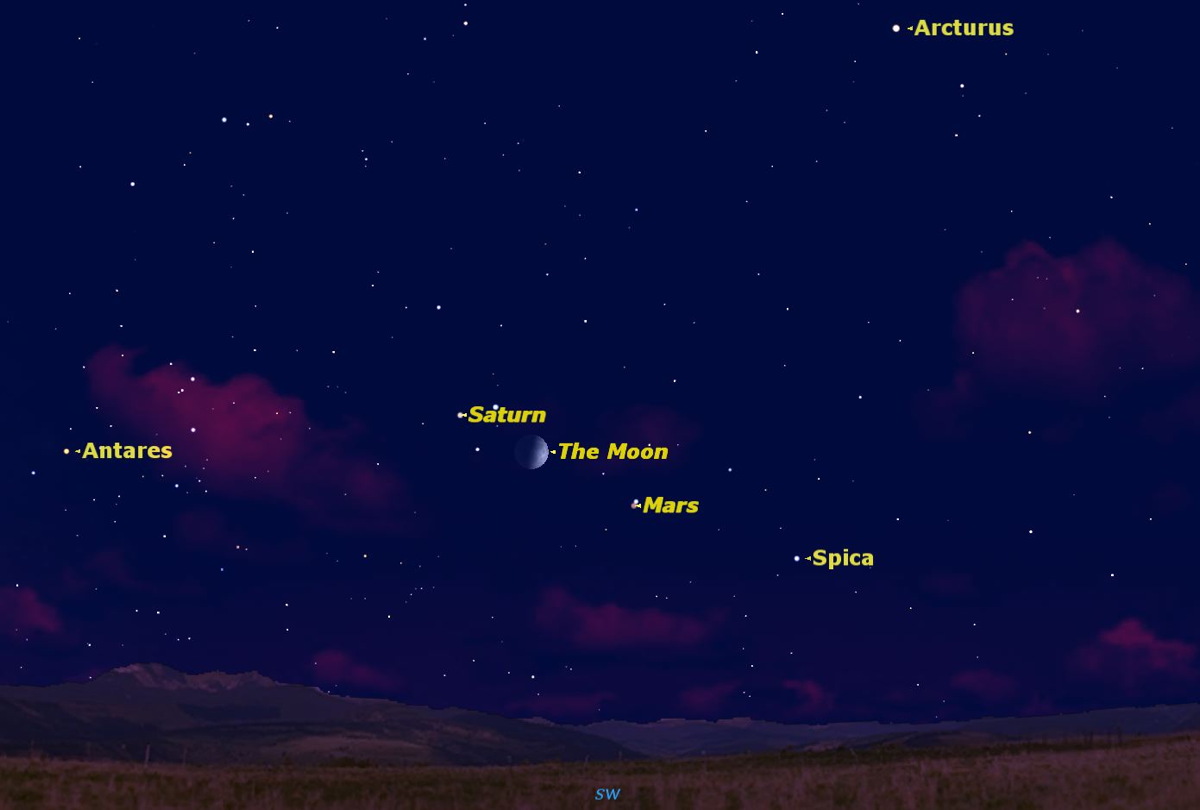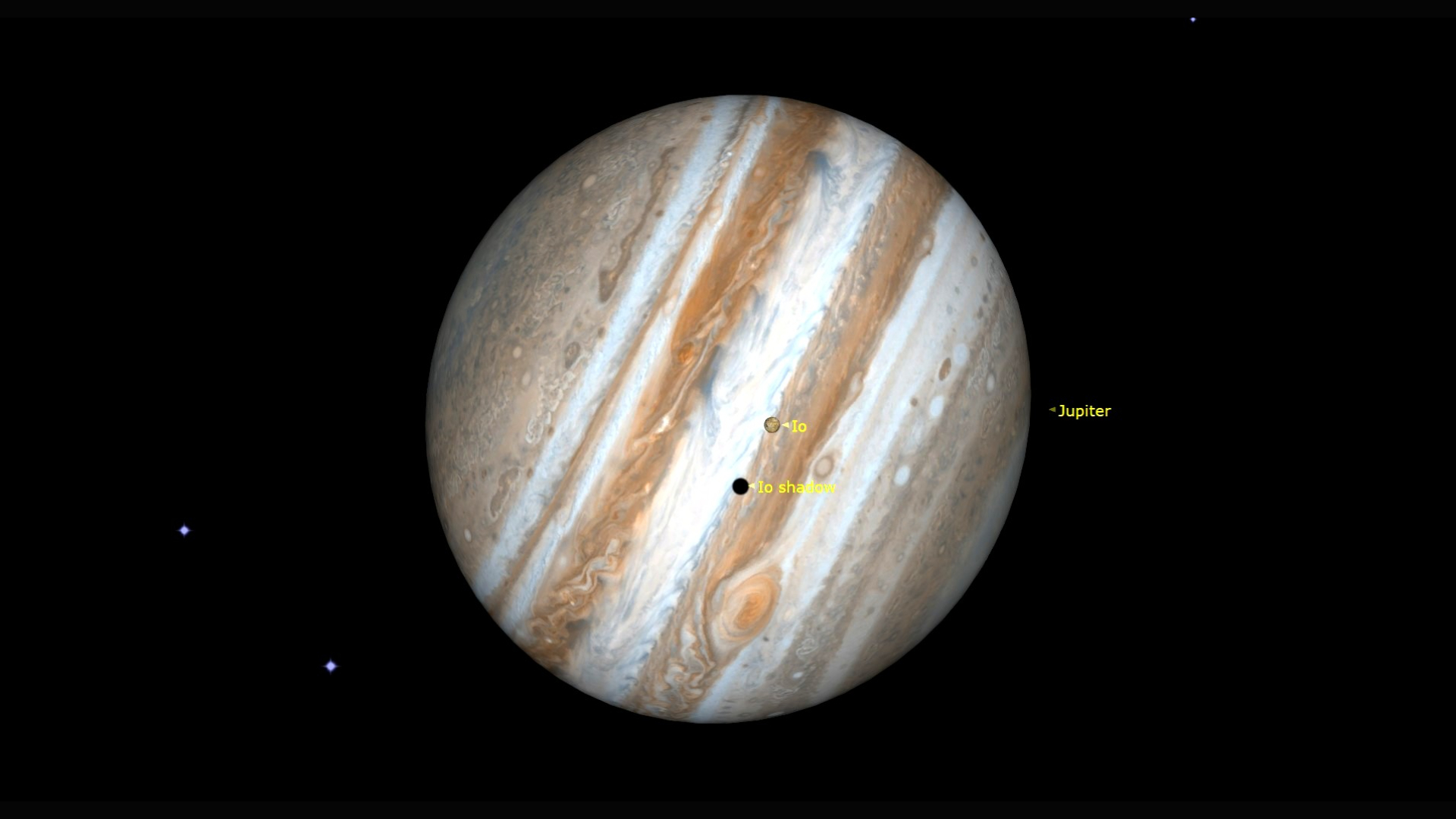See the Moon 'Photobomb' Saturn Monday: Live Slooh Webcast

Saturn and Earth's nearest neighbor will perform a celestial dance on Monday (Aug. 4), when the moon will eclipse the ringed planet for stargazers in Australia, but you don't have to go Down Under to catch the event. You can see it live online.
The Slooh Community Observatory, a website that provides telescope views of the night sky, will host a free webcast of the moon passing in front of Saturn from several observatories across Australia. Weather permitting, the webcast will begin at 7 a.m. EDT (4 a.m. PDT/1100 GMT) and be available at www.slooh.com.
You can also watch the Saturn/moon webcast live on Space.com, courtesy of Slooh representatives, who described the moon's eclipse of Saturn as a cosmic "photobomb."
"Such an eclipse is called an occultation and it's quite dramatic when it involves a bright photogenic object like Saturn, whose rings are now nearly optimally tilted," Slooh astronomer Bob Berman said in a statement. "Slooh's live feeds from Australia will capture the actual eclipse of Saturn by the Moon, with striking detail visible on the foreground moon and the background planet; a true photobomb moment. This is one of those don'tmiss events."
Slooh host Geoff Fox and engineer Paul Cox will join Berman to provide live commentary during the webcast. Viewers can follow the event live on Twitter and submit questions using the hashtag #SloohMoonBomb. [August Stargazing: Planets Converge as Perseids Reign (Video)]
While the moon's actual occultation of Saturn won't be visible to stargazers in North America (where it will be early morning), observers can hope to spot Saturn, the moon and other planets in the night sky tonight (Aug. 3) as a celestial preview.
The moon will appear between the planets of Mars and Saturn in the first few hours after nightfall. For observers without a telescope, Saturn will appear like a bright star, while Mars will shine with a reddish-orange hue.
Breaking space news, the latest updates on rocket launches, skywatching events and more!
"This 3-way lineup will be obvious to anyone who looks up, even from lightpolluted cities, and no telescope is required," Slooh representatives wrote. "After the moon and two planets set in North America, the moon keeps moving eastward against the background stars until it covers up Saturn as seen from parts of Earth's Eastern Hemisphere."
Saturn and Mars are just two of the bright planets visible in August. Mars and Saturn are shining in the west-southwestern sky in the evenings. Meanwhile, the brilliant Venus and bright Jupiter are visible in the east-northeastern sky early each morning before sunrise
Another August night sky event, the annual Perseid meteor shower, is expected to hit its peak on Aug. 13. However, this year's Perseids peak just after the Aug. 10 full moon, which will interfere with the meteor display. The August full moon will occur as the moon is at its closest point to Earth in its orbit, making it be one of the biggest of 2014. It will be the second of three back-to-back "supermoons" in July, August and September.
Editor's note: If you capture an amazing unaided eye or telescope view of the moon and Saturn on Monday, or any other night sky photo that you'd like to share for a possible story or image gallery, you can send images and comments in to Space.com at: spacephotos@space.com.
Email Tariq Malik at tmalik@space.com or follow him @tariqjmalik and Google+. Follow us @Spacedotcom, Facebook and Google+. Original article on Space.com.

Tariq is the award-winning Editor-in-Chief of Space.com and joined the team in 2001. He covers human spaceflight, as well as skywatching and entertainment. He became Space.com's Editor-in-Chief in 2019. Before joining Space.com, Tariq was a staff reporter for The Los Angeles Times covering education and city beats in La Habra, Fullerton and Huntington Beach. He's a recipient of the 2022 Harry Kolcum Award for excellence in space reporting and the 2025 Space Pioneer Award from the National Space Society. He is an Eagle Scout and Space Camp alum with journalism degrees from the USC and NYU. You can find Tariq at Space.com and as the co-host to the This Week In Space podcast on the TWiT network. To see his latest project, you can follow Tariq on Twitter @tariqjmalik.



